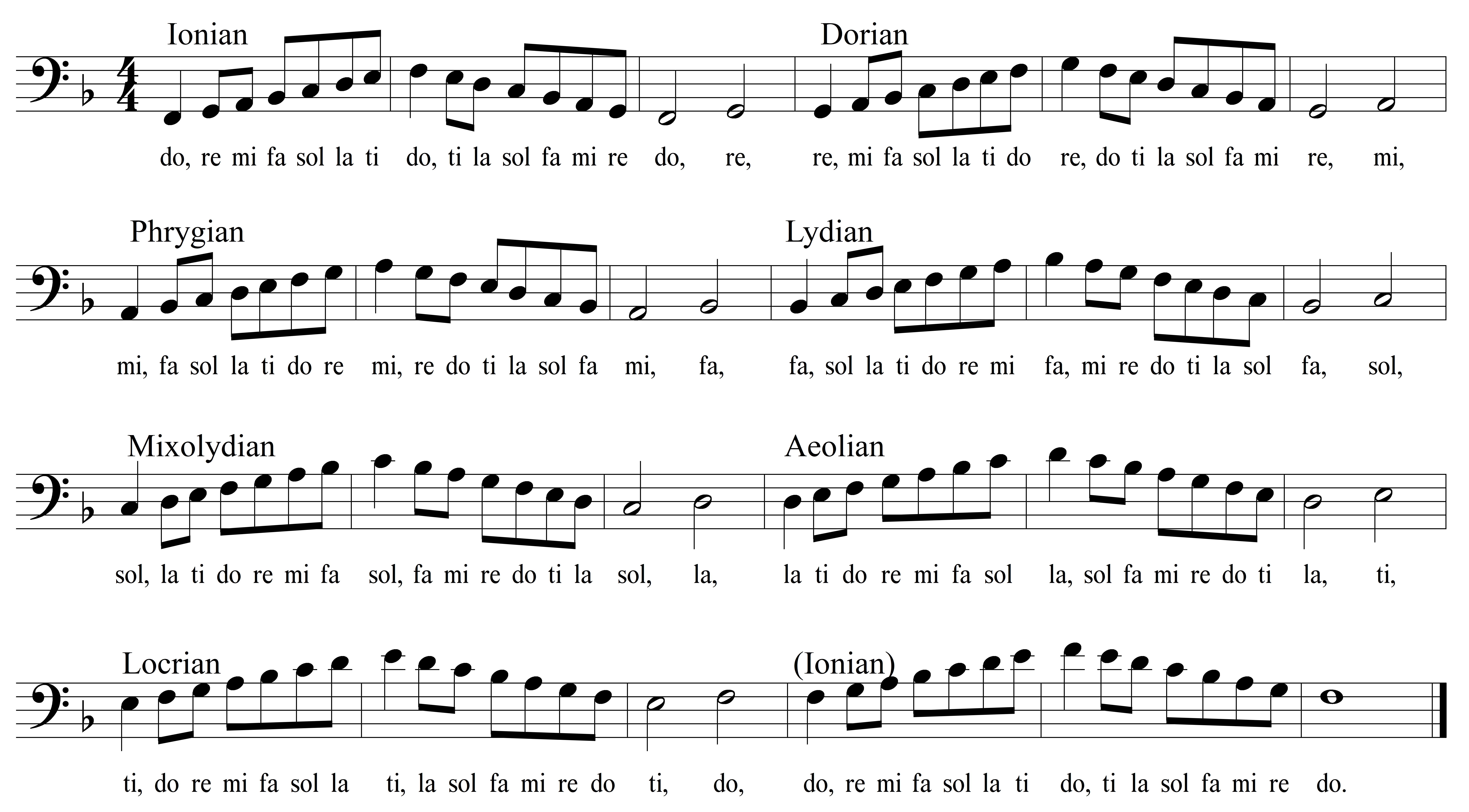Integrated Aural Skills 2018-19
Ear Training - Modal Scales
Modal Scales
When we begin the diatonic scale on a solfege syllable other than do, we create a modal scale.
There are two ways of spelling the modal scales using solfege. One method takes the lowest note as do and adjusts the other degrees of the scale as necessary (for example, the Lydian scale would be spelled do, re, mi, fi, sol, la, ti, do).
The method we will use today keeps the familiar names of the solfege syllables in the diatonic scale (do, re, mi, fa, sol, la, and ti) and simply starts each modal scale on a different degree. Using this method, therefore, the Lydian scale will be spelled fa, sol, la, ti, do, re, mi, fa. The image below shows the modal scales and their solfege.

How It Looks, How It Sounds
As always, it is best to learn ear training concepts both by listening/writing and by singing. Sing this modal scales warm-up every day, transposing it into any key and register that suits your vocal range, until you can fluently sing through it without having to refer to the piano. Notice the patterns of whole and half steps. (For example, notice that only the Phrygian and Locrian scales begin with a half step.)
